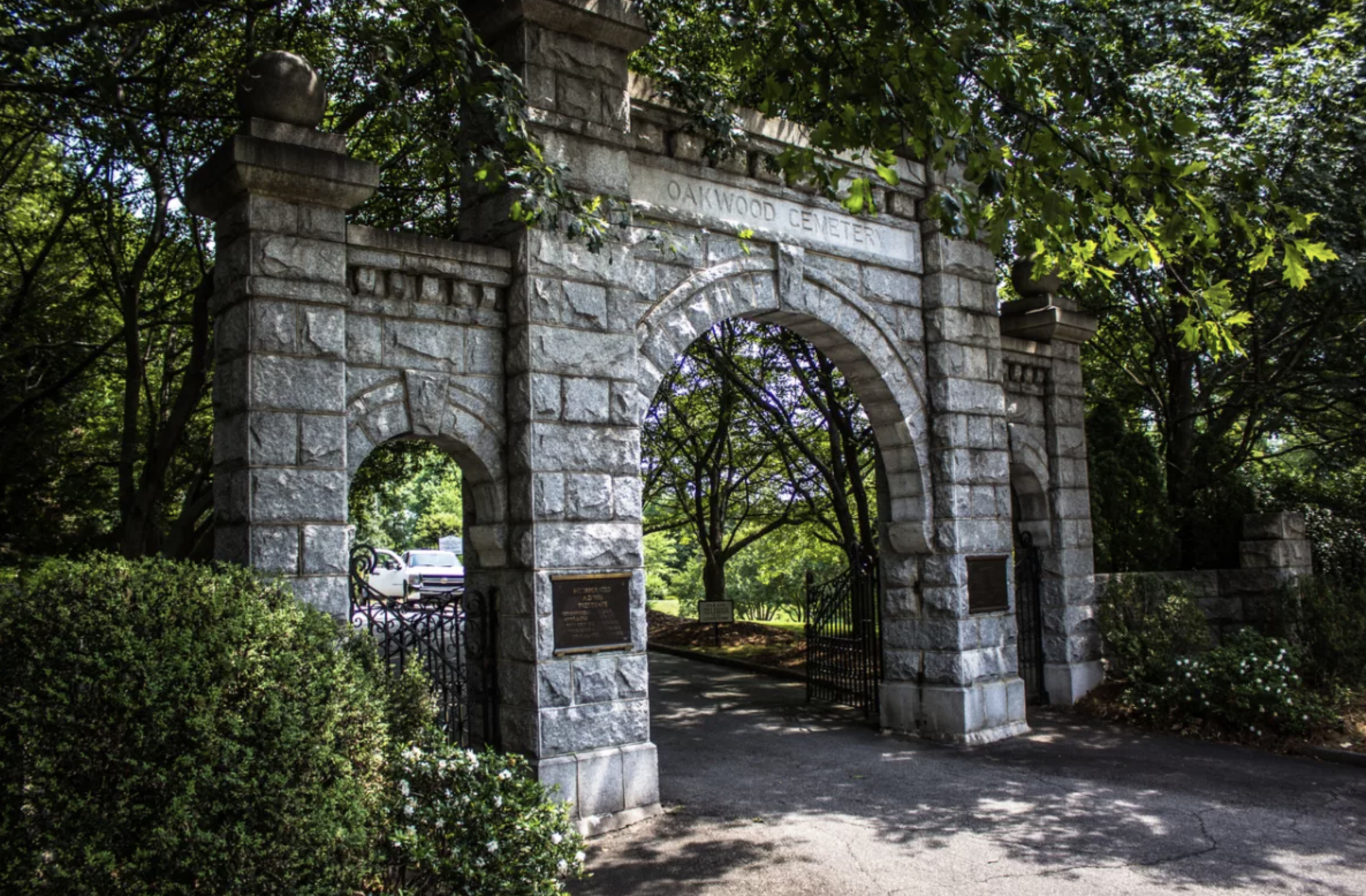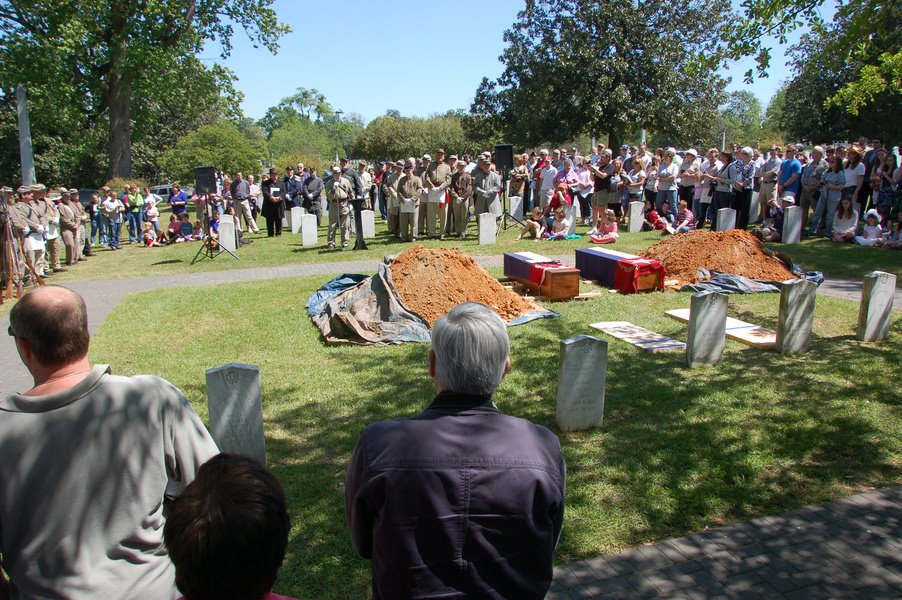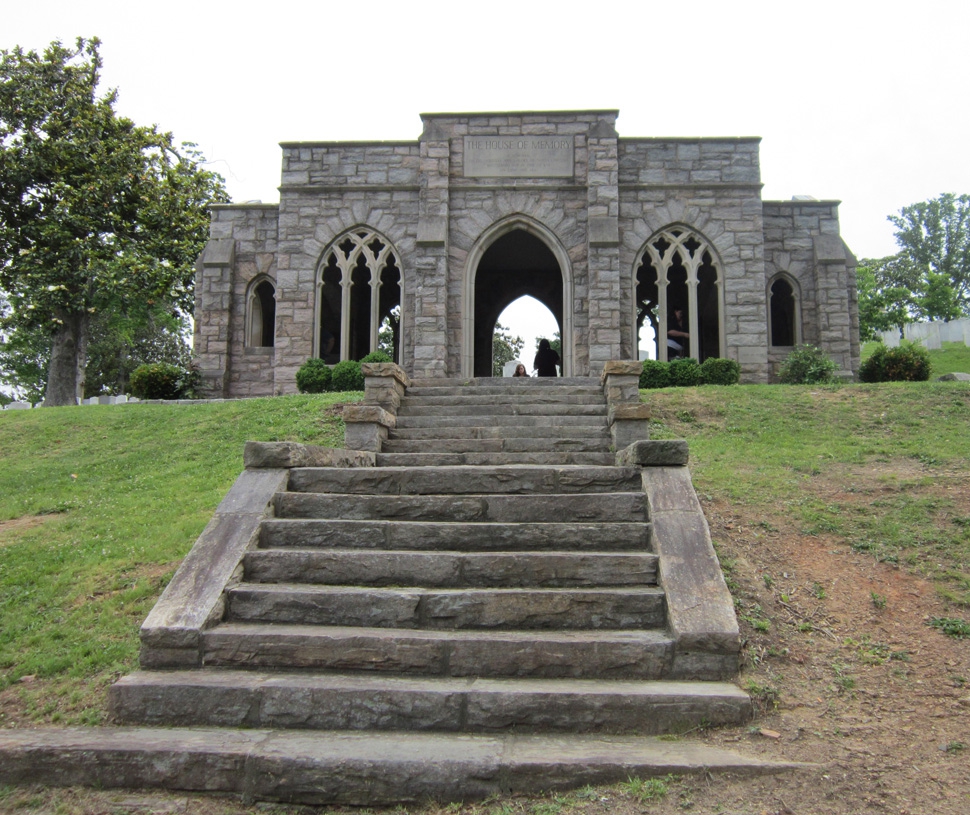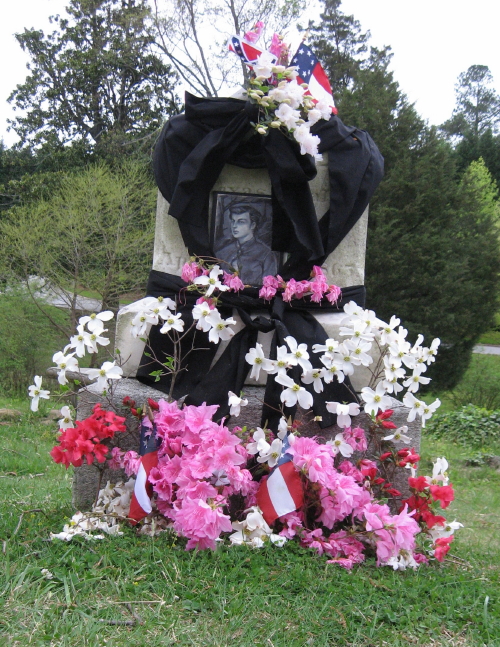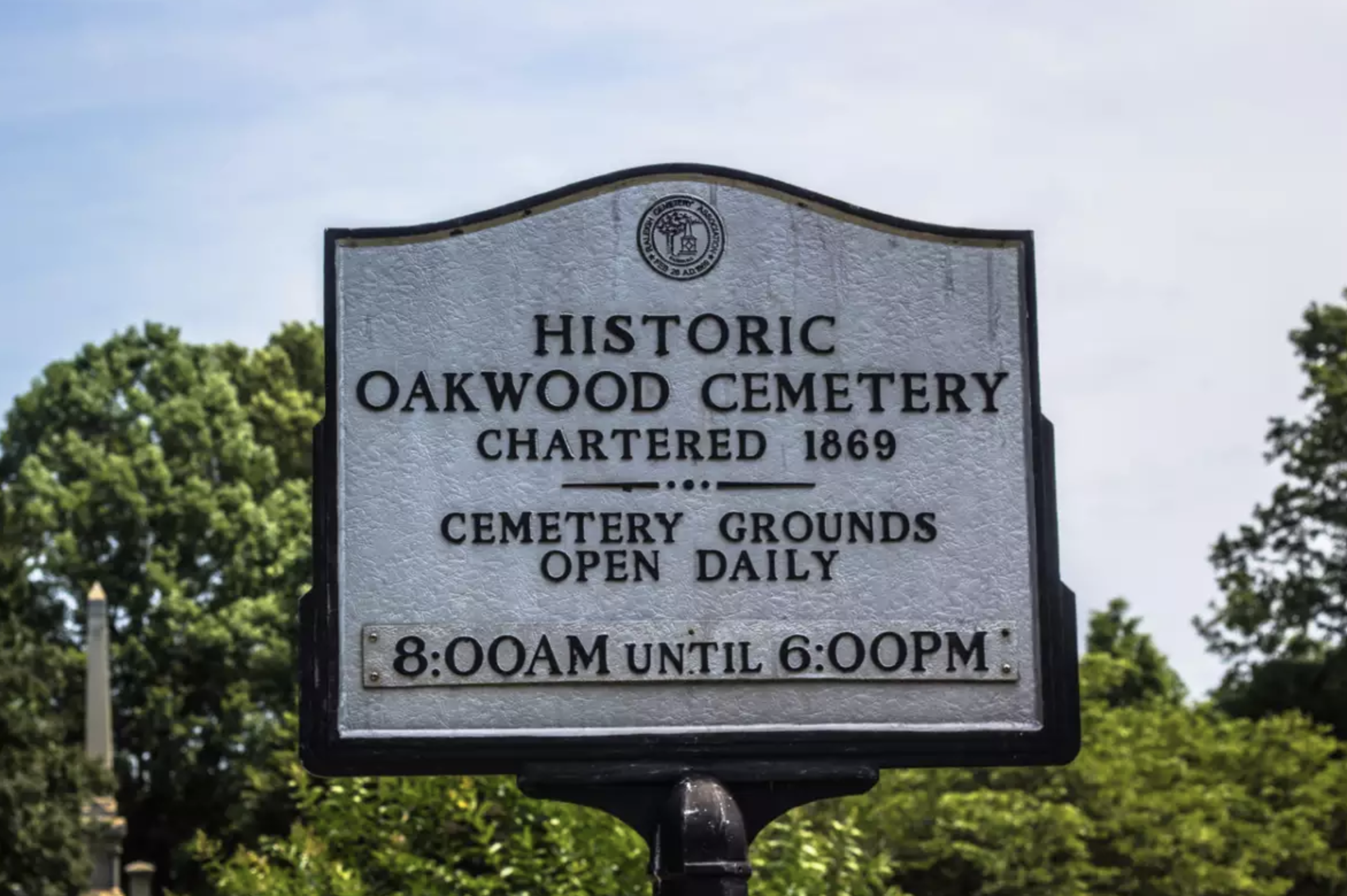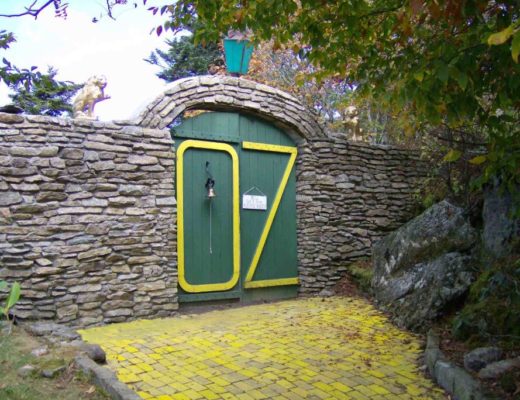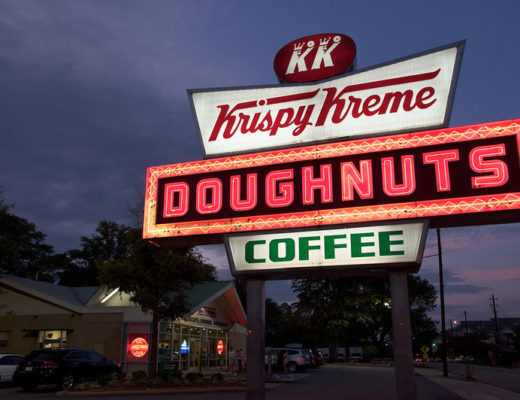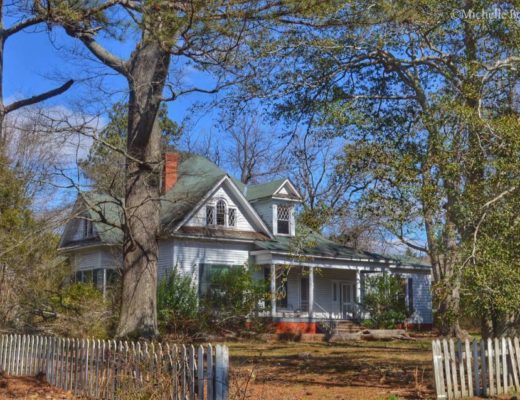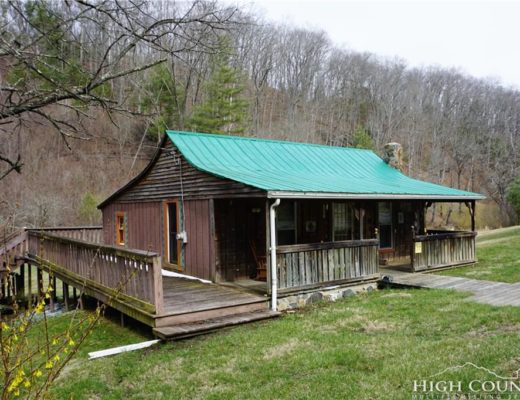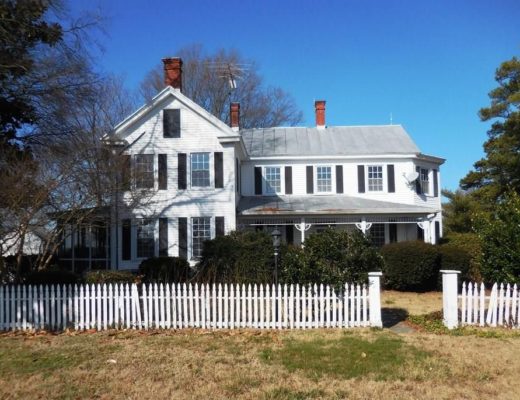April 13, 1865….153 years ago today.
Just two days earlier, on the evening of April 11, 1865, General Sherman learned that General Lee has surrendered the Army of Northern Virginia to Grant at Appomattox Court House in Virginia.
A lot of people don’t know, but Raleigh had a defensive earthen wall built around the entire city. It was never tested though. To prevent the destruction of Raleigh, which had already been seen in Fayetteville, NC, the city was officially surrendered on the morning of April 13, 1865 as General Sherman approached the city and Sherman promised to not torch the North Carolina Capital if it surrendered peacefully.
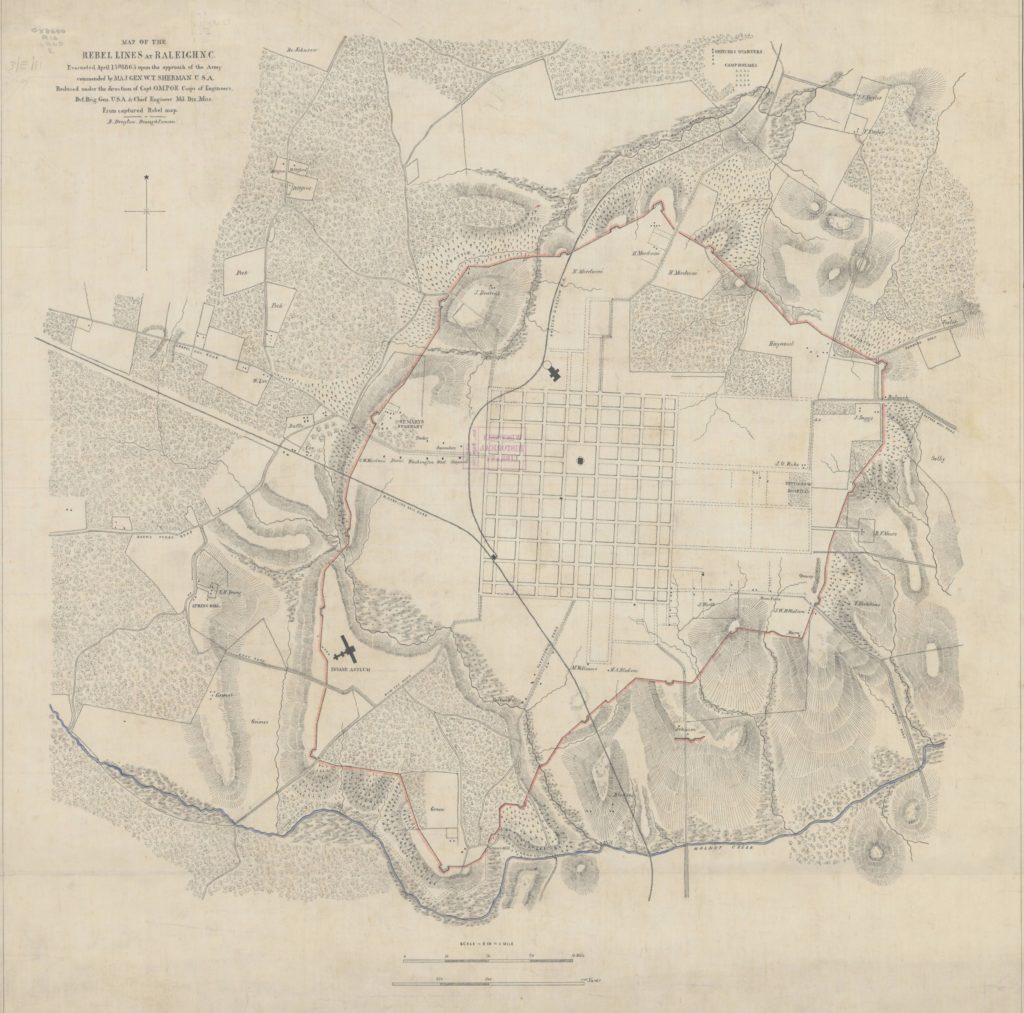
But one man of the 11th TX Cavalry could not stand the thought of Union soldiers in Raleigh, so Lieutenant Walsh (likely intoxicated from the night before with the evacuation of the city and ransacking of stores) unloaded his revolver on Federal cavalry as they approached the Capitol up Fayetteville street at the corner of Hargett and Fayetteville. “Hurrah for the Confederacy!!!” he shouted! He then turned around his horse and headed down Morgan Street towards Hillsborough Street where the rest of the Confederate cavalry was fleeing towards Morrisville Station. He was flung from his horse before he could meet up with the rest of his men and was captured by the Federal cavalry. He was taken in front of General Kilpatrick and sentenced to be hanged at Lovejoy’s Grove (the site of the present Governor’s mansion near Oakwood). He was hanged from a large oak tree and laughed until his neck broke and buried beneath the tree.
Fast forward two years to 1867, where he was re-interred on a small hill just a few blocks east of where he was hanged. That land was donated that year by Henry Mordecai to be used as a Confederate Cemetery, which eventually eventually became incorporated as Oakwood Cemetery. The Ladies Memorial Association of Wake County desired to establish a permanent burial ground for Confederate soldiers who were previously buried at the Raleigh National Cemetery. Because the Raleigh National Cemetery was to be used for Union solider burials only at the end of the war, the Ladies Association had three days to transfer five hundred Confederate Soldiers to Oakwood Cemetery, which eventually rose to more than 1,500 soldier graves.
The cemetery eventually became the burial place for many of Raleigh’s citizens over the years, and now encompasses more than 22,000 burials within its 140-acre boundary, including many many notable burials of North Carolina citizens over the past 151 years. The gravestone markers consist of six North Carolina Senators, 1,500 Confederate soldiers, four generals, and many prominent state officeholders.
The actions and death of Lieutenant Walsh (the only casualty in the surrender of Raleigh) on April 13, 1865 essentially laid the groundwork of Raleigh’s most famous cemetery. Even to this day, Lieutenant Walsh’s grave is decorated on the anniversary of his death with a black sash, candle, and flowers….and it is still a mystery who sneaks into the cemetery the night of the 12th of April every year to honor this defiant Confederate who almost had Raleigh burned to the ground for his actions!

